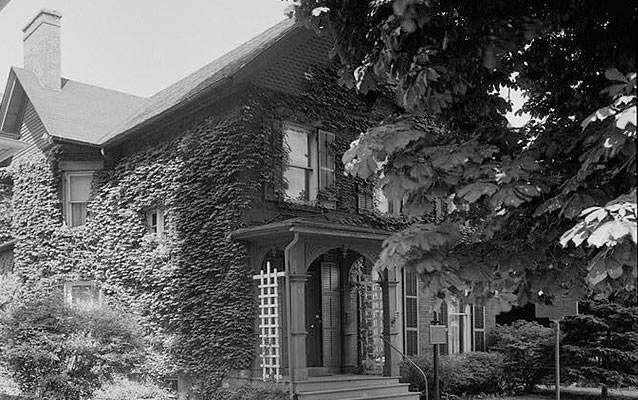Last updated: May 17, 2019
Place
Susan B. Anthony House

Historic American Building Survey courtesy of the Library of Congress
For forty years, this simple brick house served as the private home and political headquarters of Susan B. Anthony, one of the American women's rights movement's most prominent leaders.
Anthony started her career as an activist in 1849 when she moved to and quickly involved herself in Rochester's active reform movements. Before and during the Civil War, as Anthony traveled throughout New York organizing abolitionist meetings, she became increasingly aware of society's false ideas regarding the superiority of males and women's inferior role in life. When it became clear after the Civil War that the 14th and 15th Amendments would grant African-American males full citizenship, but not white women, Anthony and other feminists formed the Equal Rights Association, and broke with their abolitionist allies. In 1869, Anthony and Elizabeth Cady Stanton formed a militant wing of the women's rights movement that argued for the full acceptance of the 1848 Declaration of Sentiments.
During the 1870s and 1880s, Anthony and Stanton formed a powerful partnership, traveling, speaking, and inspiring the formation of suffrage societies all over the United States. Throughout Anthony's life, this Rochester house served as her organizational headquarters. The site of innumerable "cabinet" meetings between Anthony and women's rights movement leaders like Carrie Chapman Catt and Rev. Dr. Anna Howard Shaw, this house is also tied directly to one famous example of Anthony's constant agitation. It was in the house's front parlor, after trying to force the Supreme Court to question the 14th Amendment's constitutionality, that Anthony was arrested for illegally casting a ballot in the 1872 Presidential election.
The 14th Amendment that says that anyone born in this country is a citizen (the birthright clause). Anthony and others asserted that since women were citizens, based on the new 14th Amendment, they were already entitled to vote. Susan B. Anthony's case did not make it to the Supreme Court, but they did rule on the case of Virginia Minor, a woman in Missouri who attempted to register to vote in 1872 as a part of the same strategy. In Minor v. Happersett they determined that voting was not an inherent right of citizenship, and that the Constitution neither granted nor forbade voting rights for women. They left it up to each state to decide whether or not to let women vote.
In 1906, Susan B. Anthony died in her home, at the beginning of a century that would see women finally begin to gain equality with men.
ACTIVITY: Color a picture of the Susan B. Anthony Home
